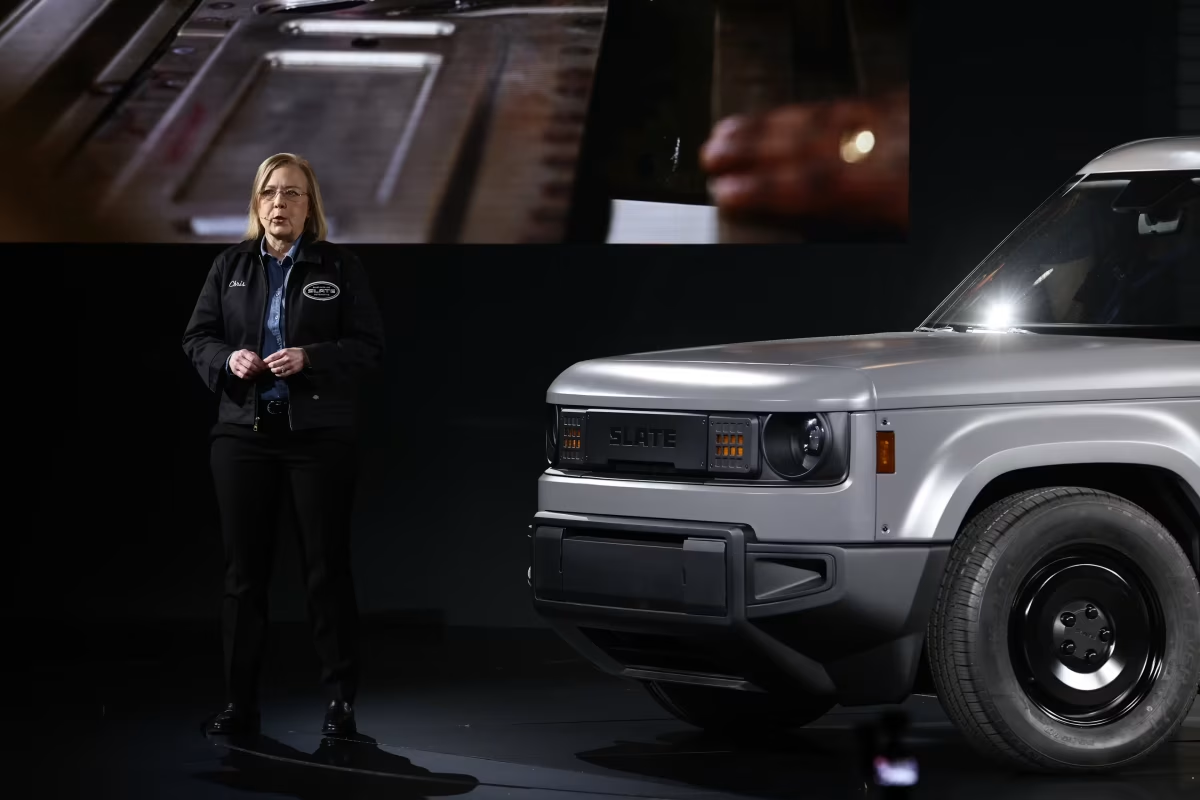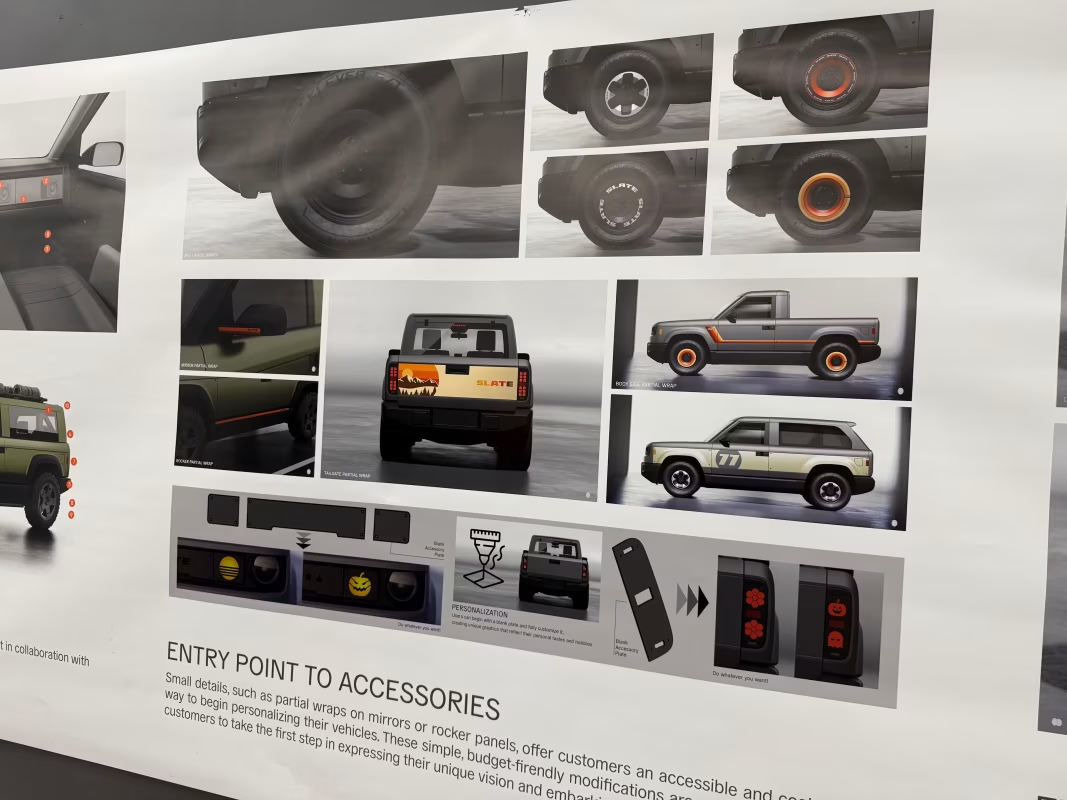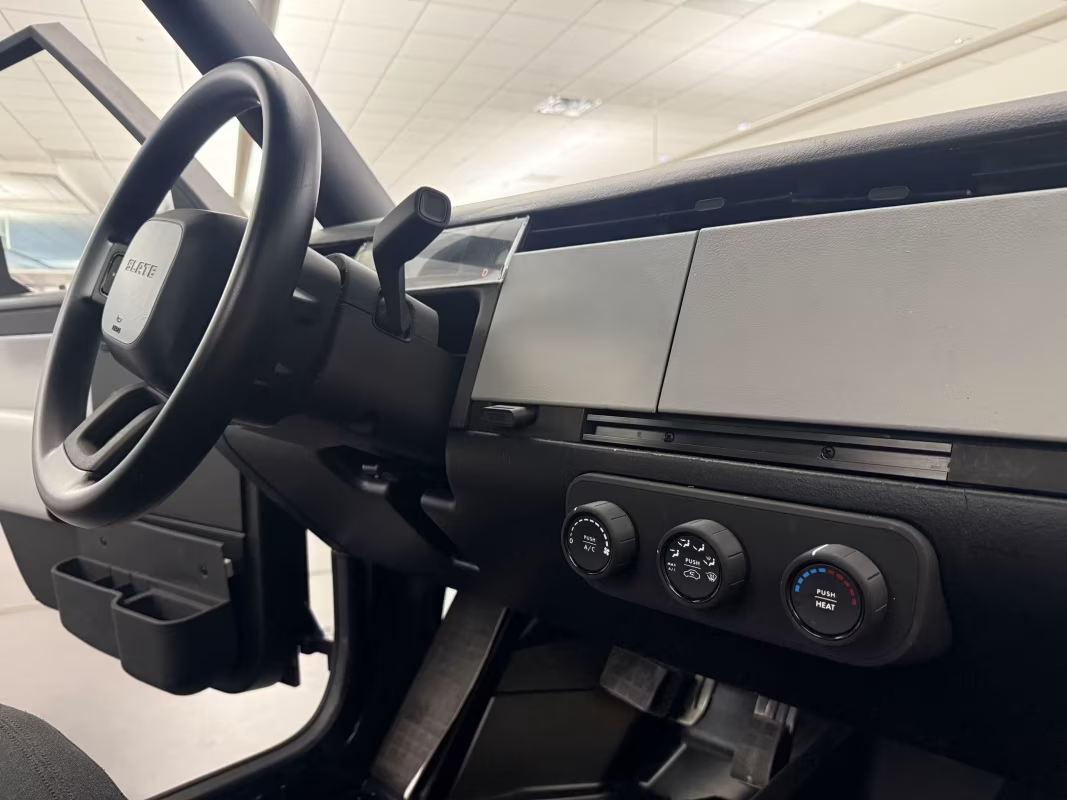In an interview with Sherwood News, Slate Auto CEO Chris Barman explained exactly how her company plans to do what Tesla never could: deliver a brand-new electric truck for just $25,000 — no gimmicks, no tax credits, and no wild price hikes. It’s called the Blank Slate, and it’s as bare-bones as the name suggests.
Forget giant touchscreens, self-driving gimmicks, or luxury-baiting light shows. The Slate truck is a two-seat EV with manual windows, no stereo, and the kind of bolt-it-yourself attitude that would make IKEA blush. It’s designed to compete not with other new trucks, but with the used car market — and at a time when the average used car costs over $27,000, that target suddenly sounds pretty ambitious.
Rani Molla/Sherwood News
Building Backwards To Drive Forward
Slate’s strategy, according to Barman, was to reverse-engineer affordability. “What are the only essentials that need to go in a vehicle?” she asked. So they cut the touchscreen, replaced powered equipment with manual parts, and focused on making everything user-replaceable. There’s no paint — it’s composite plastic. No infotainment — just bring your phone. Even the key is deliberately simple, though they still added remote access for safety-conscious buyers.
This isn’t some vaporware promise. Slate says the vehicle will meet top safety standards, offer a proper warranty, and still come in cheaper than most secondhand SUVs. You get air conditioning, a steel frame, and customisation options via accessories and wrap kits — including a hot pink one, if you’re into that sort of thing.
Barman claims they’ve pulled this off by slashing parts complexity — only 600 parts versus the industry norm of 2,500 — and by cutting out the expensive bits of traditional carmaking like paint shops and stamping equipment. All this lets them use smaller factories, fewer employees, and cheaper supplier tooling. It’s a totally different playbook from legacy brands or flashy EV startups.

Is $25k Still Possible?
Now, here’s the twist. Although Slate initially touted a sub-$20,000 figure with incentives, the actual price has crept up. According to the company’s website and recent reports, the Blank Slate is now expected to cost “in the mid-twenties”, without incentives — a roughly 20% hike attributed to the looming phase-out of federal EV tax credits under new policy shifts. The reality is that $25k is now the floor — not the post-incentive dream.
Still, for a brand-new electric truck, that’s remarkably cheap. Especially when the competition is focused on six-figure crossovers and mega-luxury statements. While everyone else is chasing Tesla’s performance and Cadillac’s opulence, Slate is doing something logical: making a car people can actually afford.

Slate
The truck’s production will happen in a converted factory in Warsaw, Indiana, using battery modules from Georgia, with a total buildout cost far below what other carmakers would need. And yes — Slate says it’ll be profitable on every vehicle it sells, even the most basic spec.
That kind of fiscal restraint, combined with the sheer simplicity of the product, might just be Slate’s biggest advantage. Jeff Bezos is backing the company, and over 100,000 customers have already configured trucks using Slate’s online tool.

Not For Everyone, But Maybe That’s The Point
Who wants a truck like this? Barman says it’s everyone from young trade workers and budget-conscious families, to DIY fans and even retired seniors who find today’s EVs too complicated. It’s not going to compete with a Cybertruck, and it’s not supposed to. It’s the anti-Cybertruck: cheap, plain, and actually useful.
Slate isn’t promising full autonomy or top-speed records. It’s promising that you can change the colour of your truck for $500 and fix a dent with your own hands. If that sounds like a step backward, maybe it’s because everyone else has been sprinting in the wrong direction.
Whether it holds the $25,000 line remains to be seen. But for now, Slate’s pitch is clear: no screens, no fluff — just an EV people can actually buy.